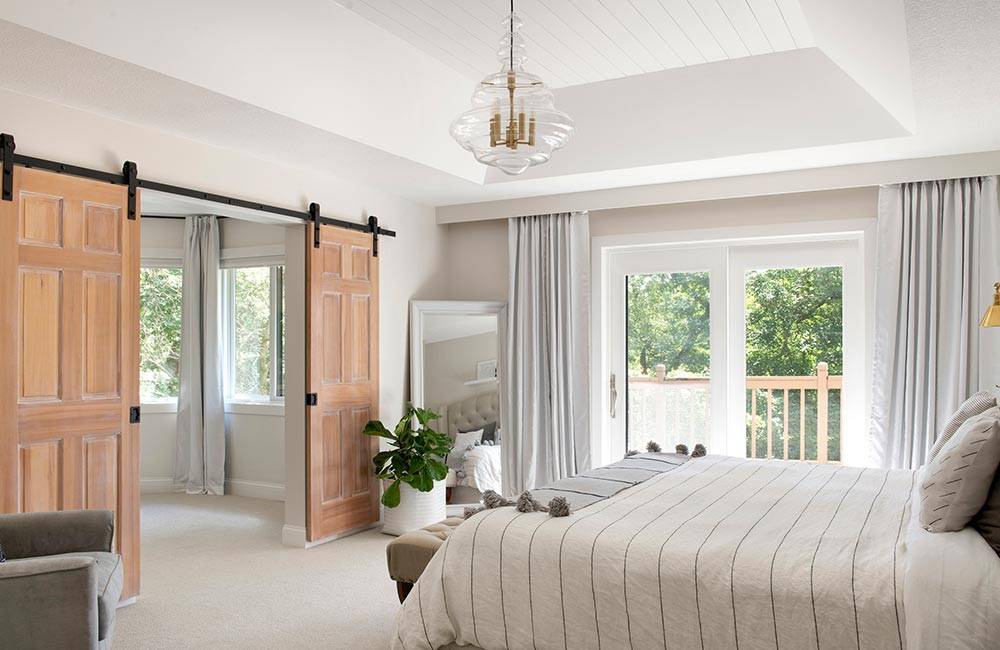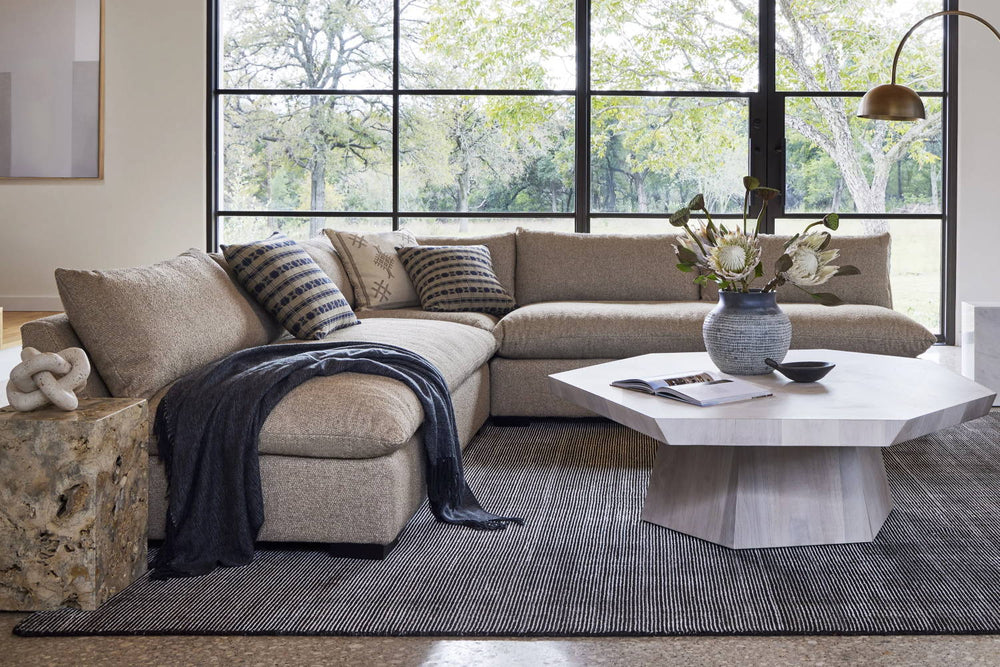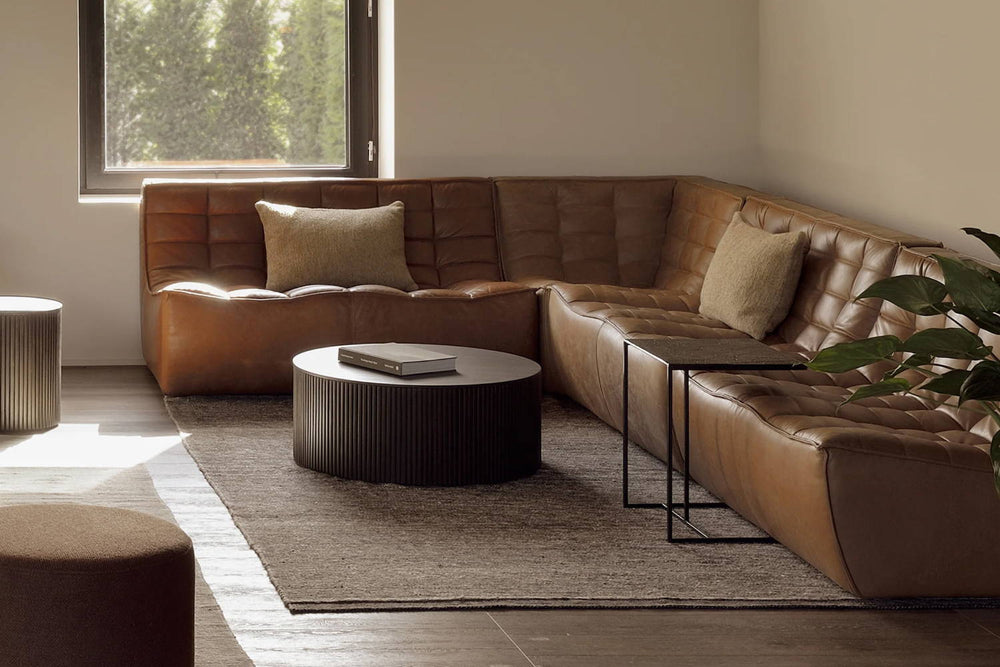When it comes to designing your dining space, every element plays a crucial role in creating a harmonious and functional environment. One often-debated question in the realm of interior design is whether or not to place a rug under the dining table. This seemingly simple decision can have a significant impact on the overall aesthetic, comfort, and practicality of your dining area. In this post, we'll delve into the various considerations, styles, and benefits associated with using a rug under your dining table. Whether you're aiming for a cozy and inviting atmosphere or a sleek, modern look, the choice of a rug can be a key factor in achieving the perfect balance for your dining space.
Advantages of Having a Rug Under a Dining Table
Visual Appeal: A well-chosen rug can elevate the overall aesthetic of your dining area, adding color, pattern, and texture to the space. It serves as a design element that complements the furniture and decor, tying the room together
Comfort Underfoot: A rug provides a soft and comfortable surface underfoot, creating a more pleasant dining experience. This is especially beneficial in dining areas with hard flooring, such as wood or tile, where a rug can add warmth and coziness.
Acoustic Benefits: The addition of a rug can help dampen sound, reducing noise levels in the dining room. This is particularly advantageous in homes with open floor plans or hard surfaces that tend to amplify sound, creating a more serene and enjoyable dining atmosphere
Preservation of Flooring: Placing a rug under the dining table helps protect the underlying floor from scratches, dents, and wear caused by furniture movement and foot traffic. This is especially relevant for delicate or high-maintenance flooring materials
Spatial Definition: A rug can delineate the dining area within a larger room, providing a sense of visual separation. This is useful in open-concept spaces, helping to define the boundaries of the dining zone and contributing to a more organized and cohesive interior layout
Versatility in Design: Rugs offer an easy and versatile way to update the style of your dining space. Whether you prefer a bold statement piece or a neutral backdrop, changing the rug can quickly transform the look and feel of the entire room
Stain Prevention: In a dining setting where spills are inevitable, a rug can act as a protective barrier for the underlying floor. Many rugs are designed to be stain-resistant, making cleanup easier and preventing long-term damage to the flooring
Individual Style: Choosing a rug allows you to infuse your personal style into the dining area. From traditional patterns to modern designs, the rug becomes a reflection of your taste and contributes to the overall personality of the space
Having a rug under your dining table offers a myriad of advantages, from enhancing the visual appeal of the room to providing practical benefits like comfort, noise reduction, and floor protection. The key is to select a rug that aligns with your design preferences and meets the specific needs of your dining space.
Considerations for Having a Rug Under a Dining Table
Size and Shape: The rug's size should be proportionate to the dining table. Ideally, it should extend beyond the edges of the table to accommodate chairs, even when they are pulled out. Consider both the size of the room and the dimensions of the table when choosing the appropriate rug size and shape
Practicality: Select a rug made from durable materials that can withstand the wear and tear associated with dining areas. Stain-resistant and easy-to-clean materials are especially important given the likelihood of spills and food crumbs
Cleaning and Maintenance: Consider the maintenance requirements of the rug. Opt for materials and styles that are easy to clean, whether through regular vacuuming or spot cleaning. This is crucial in a dining space where accidental spills are common
Coordination with Decor: Ensure that the rug complements the overall style and color scheme of the dining room. Whether it's a bold statement or a subtle addition, the rug should harmonize with the existing decor, including the dining table, chairs, and other furnishings
Accessibility: Be mindful of how the rug may impact the flow of traffic in the dining area. Choose a size and placement that allows for comfortable movement around the table, ensuring that chairs can be easily pulled in and out without catching on the rug
Functionality: Consider the primary function of the rug in the dining area. If you prioritize comfort and warmth, a plush rug may be suitable. If easy maintenance is crucial, opt for materials that resist stains and spills
By carefully considering these factors, you can make an informed decision about whether to place a rug under your dining table and choose one that enhances both the aesthetic and functionality of your dining space.
Tips for Choosing the Right Rug for Your Dining Room
Size Matters: Ensure the rug is appropriately sized for your dining table. The rug should extend beyond the edges of the table, allowing ample space for chairs, even when pulled out. A good rule of thumb is to add at least 24 inches to the dimensions of the table
Consider Shape: Choose a rug shape that complements the shape of your dining table. For a rectangular table, a rectangular or oval rug usually works well, while a round table pairs nicely with a circular rug
Material Selection: Opt for durable materials suitable for a high-traffic area like the dining room. Stain-resistant and easy-to-clean materials such as wool, synthetic fibers, or blends are practical choices. Natural fibers like jute or sisal can add texture but may require more maintenance
Ease of Maintenance: Consider the level of maintenance you're willing to commit to. Low-pile rugs are often easier to clean and maintain than high-pile options. Additionally, choose colors and patterns that can camouflage potential stains and dirt
Style and Aesthetics: Harmonize the rug with your overall decor style. Consider the color palette, pattern, and texture of the rug in relation to the existing furnishings and decor in your dining room. A rug can be a focal point or a subtle compliment to the overall design
Texture and Pile Height: Think about the texture and pile height of the rug. A plush, high-pile rug can add warmth and comfort, while a low-pile or flatweave rug may be more practical in terms of ease of cleaning, especially in a dining area prone to spills
Pattern Considerations: If you choose a patterned rug, ensure that it complements rather than competes with other patterns in the room. Consider the scale of the pattern in relation to the size of the dining table and room
Color Harmony: Pay attention to the color scheme. A rug can tie together various elements in the room. Choose colors that either complement or contrast with your existing decor, depending on the look you want to achieve
By keeping these tips in mind, you can confidently select a rug that enhances the aesthetic appeal of your dining room while meeting the practical needs of this central gathering space in your home.
The decision of whether to place a rug under your dining table is a nuanced one that depends on various factors, including your personal style, the size of the room, and your lifestyle. A well-chosen rug can serve as a design anchor, adding warmth, texture, and visual interest to your dining space. It can also provide practical benefits such as noise reduction, floor protection, and a comfortable underfoot feel. On the other hand, a minimalist aesthetic or a preference for easy maintenance might lead you to forgo a rug in favor of a clean, unadorned floor. Ultimately, the key is to strike a balance that aligns with your individual tastes and needs. Consider the size and shape of your dining table, the layout of the room, and the overall design scheme you're aiming for. Whether you opt for a bold statement piece or a subtle, neutral rug, the goal is to enhance the dining experience and create a space that reflects your unique style.








